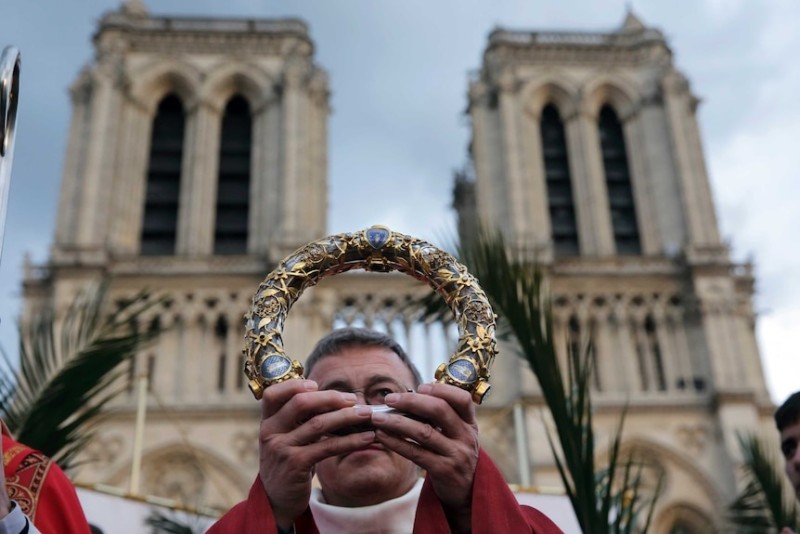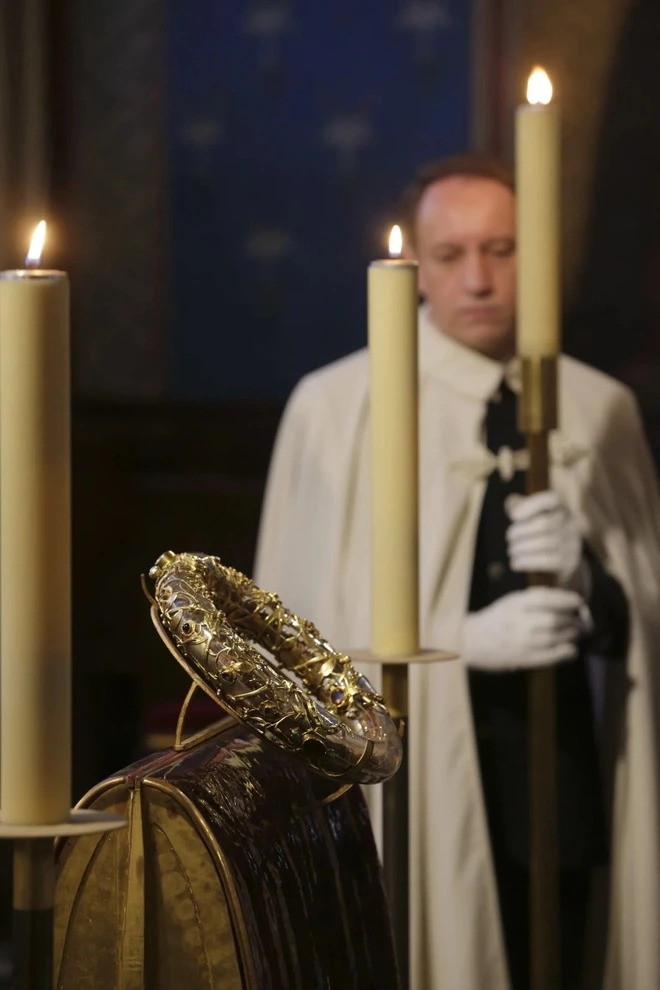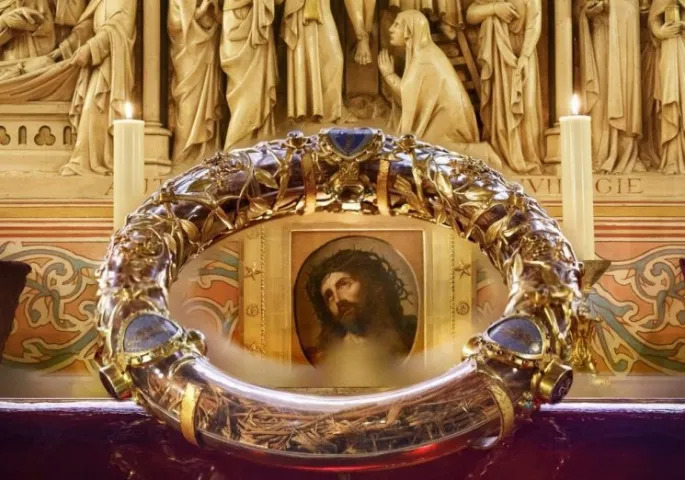According to the AP news agency, a momentous event has just taken place in the capital Paris, France: the Crown of Thorns, one of the most sacred relics of Christianity, has officially been returned to Notre Dame Cathedral. This event took place nearly 5 years after the horrific fire in April 2019, when rescue workers bravely pulled this priceless relic from the sea of fire that was ravaging the cathedral.
The 2019 fire caused severe damage to Notre Dame Cathedral, an architectural and cultural icon not only of France but also of the world. In that critical moment, the protection and rescue of the relics, including the Crown of Thorns, became an urgent task. Fortunately, thanks to the efforts of the fire department and staff, the Crown of Thorns was preserved intact.

The Crown of Thorns, one of Christianity's most priceless and sacred relics, has been officially returned to Notre Dame Cathedral, nearly five years after the devastating fire in April 2019.
The return of the Crown of Thorns is more than just the return of an artifact to its original location. It carries profound symbolic meaning, marking an important step in the restoration of Notre Dame. The Crown of Thorns, according to legend, is the crown of thorns placed on the head of Jesus by the Roman soldiers before his crucifixion. It is therefore a symbol of sacrifice, suffering and faith. The return of the Crown of Thorns to Notre Dame is a sign of hope, of rebirth and a source of great spiritual comfort for the Catholic community worldwide. At the same time, it is also a reminder of the importance of preserving cultural heritage, historical witnesses and symbols of humanity in the face of events.

This is a historical symbol.
The first traces of the relic’s existence were recorded by pilgrims to Jerusalem in the fifth century. These fragmentary records reveal the early reverence for the relic. In 1239, King Louis IX of France bought the crown and brought it to Paris, where it was placed in Notre Dame Cathedral. He then entrusted it to Sainte-Chapelle for safekeeping, and it was returned to Notre Dame. At the time of the April 15, 2019, fire, the Crown of Thorns was kept in a sealed box with several other ancient artifacts, according to AP. Firefighters quickly collected them before the fire spread further.

The crown was kept in a gold-inlaid box and kept in the cathedral's treasury, only occasionally displayed to the public.
The Crown of Thorns, a priceless relic, is a simple rolled-up strip of twigs, then encased in a gilded ring for protection and honor. This humble appearance holds deep religious significance and a long history.
Interestingly, in 2018, biologists at Israel’s Volcani Agricultural Research Center made a major discovery regarding the tree that is believed to be responsible for this crown: the jujube tree (Ziziphus spina-christi). Their research revealed that the tree possesses an incredible ability to adapt to harsh conditions, particularly the ability to withstand high temperatures and arid environments. This strong survival ability has led scientists to believe that the jujube tree could play a key role in stopping desertification. They have called it a “pioneer” tree in the fight against desertification, an increasingly serious environmental problem around the world.




































